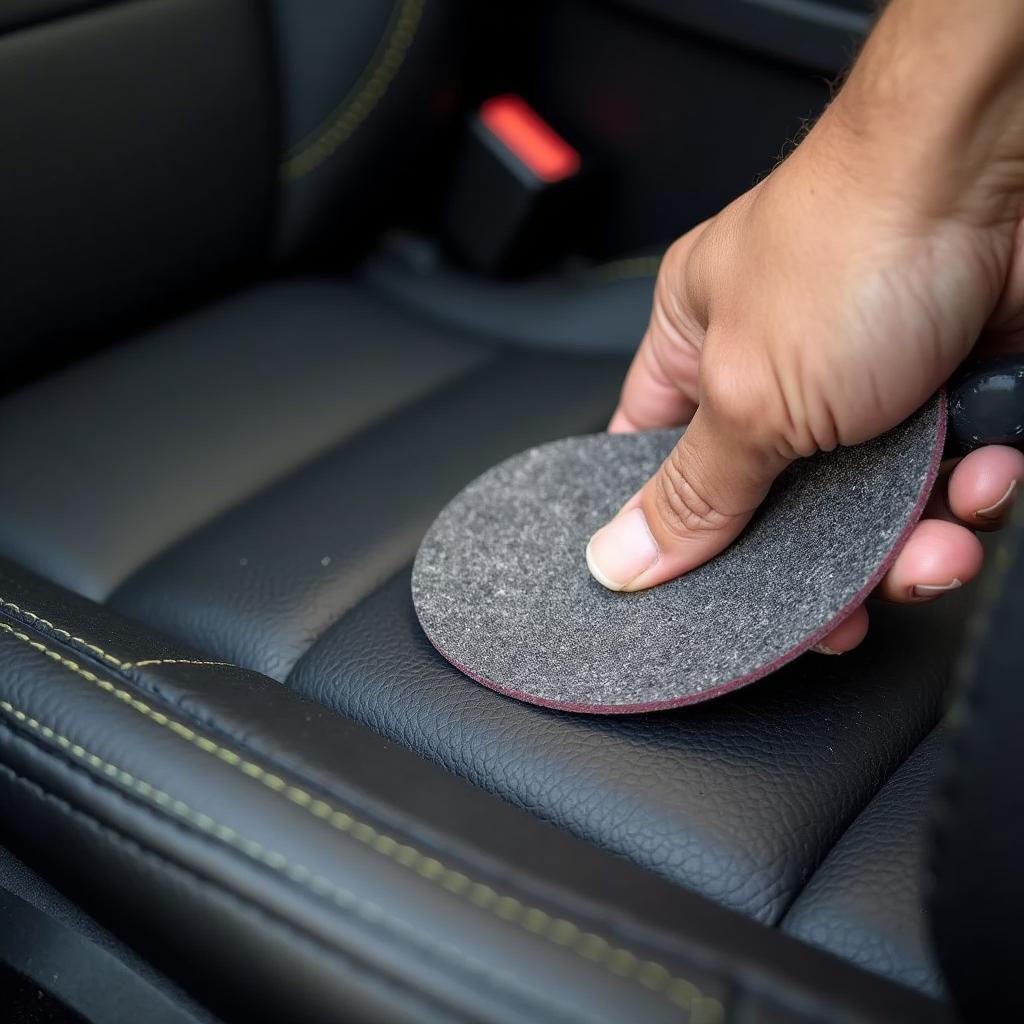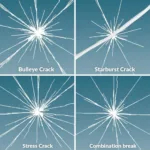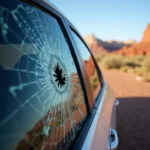Discovering a burn hole in your car seat can be disheartening. Whether it’s from a dropped cigarette or a forgotten curling iron, the damage can feel permanent. However, don’t despair! This comprehensive guide will equip you with the knowledge and techniques to effectively repair that burn hole and restore your car seat’s appearance.
Assessing the Burn Damage: What You Need to Know
Before diving into the repair process, it’s crucial to assess the extent of the damage.
- Minor Burns: Small, superficial burns often only affect the fabric’s top layer. These are generally easier to fix.
- Moderate Burns: These burns penetrate deeper into the fabric and may require more involved repair techniques.
- Severe Burns: Large, deep burns significantly impacting the seat’s structural integrity may necessitate professional intervention or even seat replacement.
Once you’ve gauged the severity, you can choose the most appropriate repair method.
DIY Repair Methods for Burn Holes in Car Seats
Several DIY methods can effectively address burn holes, depending on the damage level.
1. Repairing Minor Burns with Fabric Shavers or Fine Sandpaper
For minor burns, you can often improve the appearance significantly with simple tools:
- Fabric Shaver: Gently run a fabric shaver over the burned area to remove any melted or charred fibers. Be cautious not to press too hard, as you could damage the surrounding fabric.
- Fine-Grit Sandpaper: Use fine-grit sandpaper (600 grit or higher) to lightly sand the burned area. This method helps to blend the edges of the burn with the surrounding fabric, making it less noticeable.
After using either method, vacuum the area to remove any debris.
2. Patching Moderate Burns with Fabric Patches or Fillers
Moderate burns require a more robust approach. Here are two effective methods:
-
Fabric Patching:
- Find a matching fabric scrap from an inconspicuous area of the car seat (underneath or from the back).
- Cut a patch slightly larger than the burn hole.
- Apply fabric glue specifically designed for automotive upholstery to the back of the patch.
- Carefully align the patch over the burn hole and press firmly.
- Use a heavy object to weigh down the patch while the glue dries.
-
Fabric Filler:
- Clean the burned area with rubbing alcohol and allow it to dry completely.
- Choose a fabric filler that matches your car seat’s color.
- Apply the filler in thin layers, allowing each layer to dry completely before applying the next.
- Once the filler is level with the surrounding fabric, use fine-grit sandpaper to smooth and blend it seamlessly.
3. Addressing Severe Burns: Professional Help vs. Seat Replacement
For severe burns impacting the seat’s structure, DIY repairs are generally not recommended.
- Professional Upholstery Repair: A professional upholsterer possesses the skills and materials to repair or replace the damaged section effectively, ensuring a seamless and durable finish.
- Seat Replacement: If the damage is beyond repair, seat replacement might be the most viable option. Consider sourcing a used seat from a salvage yard to manage costs.
Preventing Future Burn Holes: Proactive Measures
Prevention is always the best approach. Here are some tips:
- Be Mindful of Heat Sources: Avoid leaving cigarettes unattended and ensure curling irons or other heated appliances are fully cooled before storing them.
- Use Seat Covers: Durable seat covers provide an extra layer of protection, shielding your seats from accidental burns and spills.
- Establish a “No Smoking” Policy: If you’re concerned about cigarette burns, implementing a strict “no smoking” policy in your vehicle is highly effective.
Conclusion
While a burn hole in your car seat can be an unwelcome surprise, understanding the repair options empowers you to address the issue effectively. By assessing the damage, choosing the appropriate method, and taking preventative measures, you can maintain your car’s interior and enjoy a comfortable ride.
Frequently Asked Questions
1. Can I use super glue to repair a burn hole in my car seat?
Using super glue is not recommended as it can harden the fabric, making it brittle and prone to cracking. Opt for fabric glue specifically designed for automotive upholstery.
2. Is it necessary to sand the fabric filler after it dries?
Yes, sanding the dried fabric filler helps to create a smooth and even surface, ensuring a seamless blend with the surrounding fabric.
3. How much does professional car seat upholstery repair cost?
The cost varies depending on the extent of the damage, the type of fabric, and the upholsterer’s rates. It’s best to obtain quotes from several professionals.
4. Are leather car seats more or less susceptible to burn holes than fabric seats?
Leather seats are generally more resistant to burn holes than fabric seats. However, they can still be damaged by extreme heat, resulting in discoloration or even cracking.
5. Can I repair a burn hole in a heated car seat?
Repairing a burn hole in a heated car seat requires extra caution as you don’t want to damage the heating elements. Consider consulting a professional for this type of repair.
Need more help with car seat repairs? Check out our guides on how to repair a tear in a vinyl car seat, how to repair – large tear in leather car seat, how to repair tear in vinyl car seat, leather repair car seat tear, and how to repair small tear in cloth car seat for more information and step-by-step instructions.
We’re here to assist you with any car repair concerns you may have. Contact our 24/7 support team via WhatsApp at +1(641)206-8880 or email us at [email protected].



